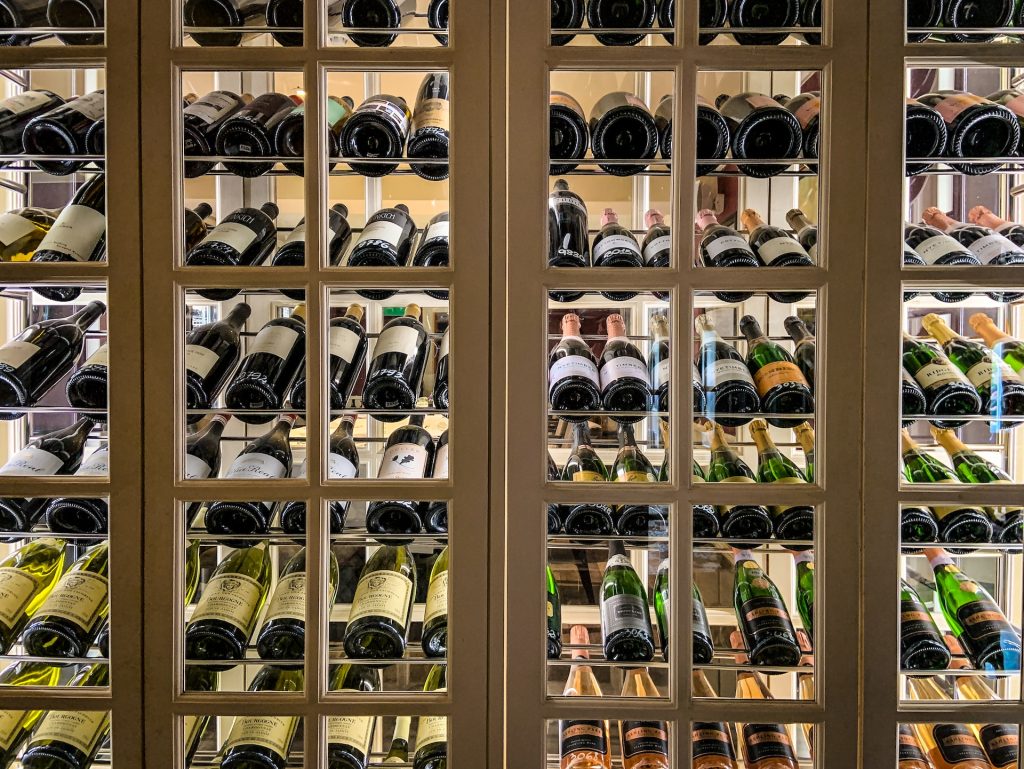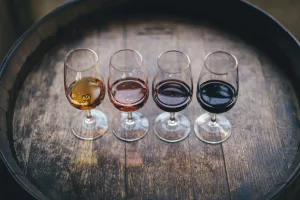
Wine collectors and enthusiasts alike have long been fascinated by the differences in wine bottle sizes and how each one plays a unique role in the world of oenophilia. From the rarely seen airplane split bottles to the more familiar 750ml, each size has its place in the wine landscape. Let’s take a look within the realm of wine bottles, to uncover the stories behind each size. We’ll shed some light on their practicality, rarity, and significance.
It’s very seldom that we see a split bottle size in the marketplace (187.5ml) as these are used on airplanes and the like. Even more seldom is seeing a bottle this size in a collection. This size is certainly more prominent in liquor bottles but we know that the average collector does not keep these in their wine cellar much less in a wine refrigeration cabinet. The quality of wine in the split bottles is usually….well…airplane quality simply because nobody is going to order enough to fill half of a plastic cup in a restaurant to have with their meal.
As we move up to the more popular 375ml (Demi)size bottle. Very common in the dessert wine category due to its size. If you have ever had the pleasure of dessert wine, you know they tend to be super sweet, particularly ice wines. The limited size of effectively two regular glasses or four small “splashes” as a dessert is fitting. This is not to say they do not exist in larger bottles, it is just simply more common to see them in the 375ml size.
The 500ml (Jennie) is the lesser-known bottle size in the lower-end sizes of bottles as they are kind of “tweeners”. In between 375ml (two glasses) and 750ml (four glasses). The lesser produced and for sure collected less. Again, typically a general consumption quality wine when seen in the marketplace.
The most common and what you find on dinner tables around the world is the 750ml size. Approximately four glasses of wine (depending on your pour). This size is the most common size of a wine bottle for collectors and is the most mass-produced by vineyards around the world. As wine cellar experts that work with wine refrigeration, we often ask how many bottles will be in the wine cellar and the assumption is the 750ml bottle as it is the most commonly collected as well. More history on the size in a later blog regarding this size bottle.
Moving along to the size that in my opinion, should be more popular. The 1.5L (Magnum). As we follow the math, this comes to eight glasses of wine. Ultimately of course, if it is a bottle that everyone wants to drink and the party is more than four or the four that are drinking wine and would like more than one glass. While larger and harder to store in mass quantity in a wine cellar due to their size and weight, provides a spectacular presentation as well. This is what I would deem as a must-have of at least two in the home wine cellar on a separate shelf and of course not in direct line with the airflow (as usual) of the wine refrigeration system.
From this point forward, the size of the bottles becomes almost unmanageable and is probably for the most part more marketing than practical. Following the course of math for the past couple of bottle size descriptions we now move into the “big league”. Double Magnums are 3L and are truly almost unmanageable for pouring and probably should be poured using a cradle for support and of course, pour flow.
Jeroboam (a king’s name from Israel) comes in at 4.5L. The size is equivalent to six 750ml bottles. The sheer weight of this bottle and the awkwardness of attempting to pour it is substantial. Probably best suited for a party of twelve and providing two glasses of wine per person. It stands to reason the bottle will need its own table next to your group! There is of course the premium cousin, the Rehoboam which is also 4.5 L which is a bottle of sparkling wine.
Next up is the 6.0L Methuselah, commonly known as the Imperial. Coming in at a whopping equivalent of eight standard bottles of wine. This monster of a bottle will effectively provide a glass of grape nectar for 32 people allowing each to raise a glass to toast to your ability to find one of these bottles.
Salmanazar which is 9.0L comes in representing a case of wine in a bottle. 12 750ml bottle equivalent in one bottle. While I have never seen one, I sit here sipping my little cup of coffee wondering what it looks like being wheeled through a restaurant on a hand cart with no less than three people (one pulling/pushing the cart and one on each side making sure it does not fall over on one of the tables in the restaurant and creating such a disturbance said the restaurant has never experienced). These bottles of wine, like all of the others should be kept at proper temperature in your wine cellar or wine refrigeration system.
The Balthazar….12.0L has an effective holding tank (we are moving to industrial terms…because let’s face it, these will only fit into a commercial wine cooling system or an industrial wine cooling system space…not a standard wine cellar in a residential setting) of sixteen 750ml bottles. A case and a half of wine (I reference the case several times based on the criteria that there are 12 bottles in the case. Three are cases of wine that have only six as well.)
Nebuchadnezzar four 750 bottles more than the previous size mentioned brings this behemoth in at 20 bottles of 750ml bottles of wine in one large piece of glass. While I hesitate to call this a bottle as it is probably more fitting to a small barrel in regards to the volume and size. These are rarer than the previous ones and still not the largest!
The Solomon. The king of kings in the wine size measuring contest. The equivalent to 24 bottles of 750ml of wine or FOUR CASES OF WINE. That is correct, four cases of wine in one lovely super large and almost impossible-to-navigate and ship bottle. The decanter for this size bottle could only be done using a wine decanter found in the great state of Texas or using a local water tank with the top of the tank removed for breathing.
As we can all see, wine bottle sizes vary. The shape of bottles varies and certainly, the ability to store these bottles in wine cellars or wine refrigeration facilities varies. In the end, all wines should be kept tilted and at the proper temperature. Cheers!

In the vibrant city of Los Angeles, CA, numerous wine enthusiasts are actively exploring optimal wine storage solutions. Fueled by a deep appreciation for fine

In Los Altos Hills, CA, the growing demand for tailor-made wine cellars has spurred advancements in wine refrigeration expertise. Many wine enthusiasts aspire to acquire